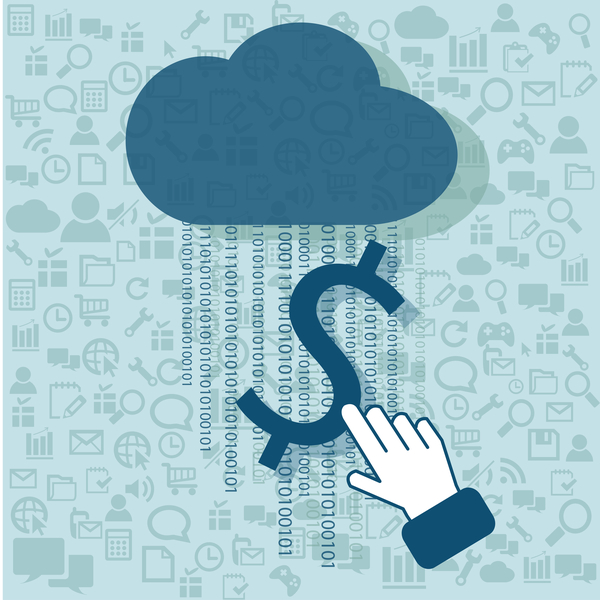
The cloud may be costing your business more than it should. CFO says cloud computing costs will exceed $1 trillion by 2024 with a CAGR of 16%. The rate of billing growth for cloud services is a wake-up call for the C-suite to evaluate and track costs — and set up controls for their cloud computing expenses.
The push for cloud services spiked when COVID-19 hit, but are we overspending? What budget measures should companies implement to get cloud spending under control?
Current state of cloud spending
It’s a safe bet you’re spending too much in the cloud. The latest data from the C-suite shows:
- 58% of organizations say they’re overspending in the cloud.
- 25% say it stifles innovation efforts.
- 40% say it causes sprawl and resource under-utilization.
- 38% say it lowers service quality.
- And 53% say overspending slows or stops cloud adoption.
Cloud computing is attractive, but it makes imposing spend metrics difficult — especially since most enterprise and mid-level IT models now assume a multi-cloud approach.

Cloud spending causes C-suite friction
“Cloud budgeting” is quickly becoming an oxymoron. In our race for convenience, business has outpaced CFOs, and they may be in hot water as a result. There’s a chasm between IT cloud spending and the CFO’s bottom line, and nearly 70% of finance executives say they’re alerted to an overspend only after it occurs. How can CIOs play nice with their CFOs? TechRepublic says goals should include:
- Collaboration on costs before the cloud migration.
- Set up workflows and processes to monitor cloud spend.
- For after-the-fact cloud tools, conduct a spending audit to regain control.
- Connect your cloud computing costs to value.
Some of the blame for CFO versus CIO friction falls on the sudden remote access needs of employees forced to work from home during the pandemic. COVID-19 accelerated cloud adoption out of necessity, but it also reduced deployment times for cloud services, compressing rollouts into days or weeks instead of months. This led to underestimation of potential cost overruns in high priority areas (e.g., compliance, security, etc.).

Best cloud control metrics
If your company is like most, your IT architecture is scattered between on-site physical networks, dedicated private clouds, multiple public clouds, legacy platforms, and SaaS. To track all this and deploy cost controls, address two critical issues: Improve collaboration between CFO and CIO, and develop methodology for spend management.
CIO spending must be tied to business goals to justify a company’s approach to innovation and implementation of new technology models. Will IT spending ultimately deliver customer value? For their part, CFOs must provide cost metrics and earn buy-in from IT — or risk becoming the bottleneck IT will try to work around.
Applying cost controls to cloud computing should follow general business models for spend management. There is no better way to track ROI in the cloud. Consider the following:
- Revenue growth. This KPI may be grounded in sales or acquisition numbers, but CIOs can never lose sight of spend versus revenue. IT deployments give companies the backbone to pursue new revenue streams, expand margins, and increase earnings. The question becomes: How does cloud technology implementation fuel company revenue?
- Service level agreements (SLAs). These contracts are a world unto themselves. Monitoring cloud spending begins with SLAs. Cloud management teams must track the availability of a resource versus its SLA promises. Track overall performance, including the critical internal and external experiences of end-users. Take special note of termination or transition language in the SLA. Nightmares have been known to result from companies attempting to end agreements early.
- Cloud optimization metrics. These criteria save time without sacrificing the functionality of cloud-based technologies. Alongside a process for rightsizing, establish goals from a cost versus resource perspective. KPIs should include production incidents by application, mean time between failures, configuration standards, and the percentage of your company’s cloud tools available on-demand versus committed use or by reservation.

McKinsey says, “Tech-enabled companies will be better positioned to lock in customers through improved products and services and could gain substantial advantages in their ability to attract talent and motivate their workforce.” To achieve these goals, enterprise organizations must establish cloud controls for financial management of technology resources. Whether beginning your cloud journey or bringing legacy cloud-based systems under control, use KPI benchmarking to improve cloud visibility, cut costs, and bring your CFO and CIO together in pursuit of a rewarding cloud computing strategy.
The Windsor Group Sourcing Advisory offers a comprehensive data and spending analysis for rightsizing cloud-based systems. Start the conversation for an evidence-based IT architecture that makes sense for your company’s bottom line.

